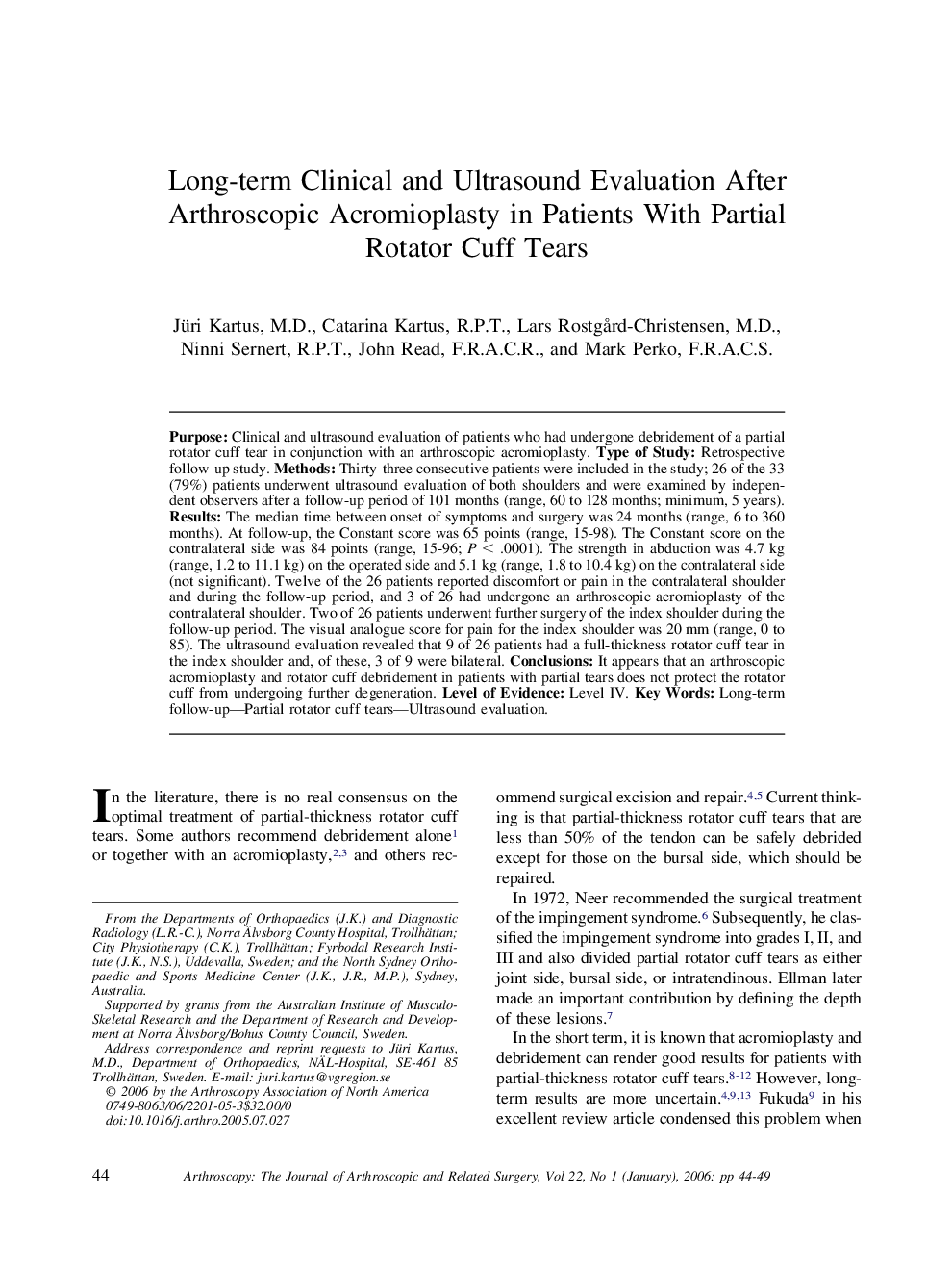| Article ID | Journal | Published Year | Pages | File Type |
|---|---|---|---|---|
| 4047397 | Arthroscopy: The Journal of Arthroscopic & Related Surgery | 2006 | 6 Pages |
PurposeClinical and ultrasound evaluation of patients who had undergone debridement of a partial rotator cuff tear in conjunction with an arthroscopic acromioplasty.Type of StudyRetrospective follow-up study.MethodsThirty-three consecutive patients were included in the study; 26 of the 33 (79%) patients underwent ultrasound evaluation of both shoulders and were examined by independent observers after a follow-up period of 101 months (range, 60 to 128 months; minimum, 5 years).ResultsThe median time between onset of symptoms and surgery was 24 months (range, 6 to 360 months). At follow-up, the Constant score was 65 points (range, 15-98). The Constant score on the contralateral side was 84 points (range, 15-96; P < .0001). The strength in abduction was 4.7 kg (range, 1.2 to 11.1 kg) on the operated side and 5.1 kg (range, 1.8 to 10.4 kg) on the contralateral side (not significant). Twelve of the 26 patients reported discomfort or pain in the contralateral shoulder and during the follow-up period, and 3 of 26 had undergone an arthroscopic acromioplasty of the contralateral shoulder. Two of 26 patients underwent further surgery of the index shoulder during the follow-up period. The visual analogue score for pain for the index shoulder was 20 mm (range, 0 to 85). The ultrasound evaluation revealed that 9 of 26 patients had a full-thickness rotator cuff tear in the index shoulder and, of these, 3 of 9 were bilateral.ConclusionsIt appears that an arthroscopic acromioplasty and rotator cuff debridement in patients with partial tears does not protect the rotator cuff from undergoing further degeneration.Level of EvidenceLevel IV.
